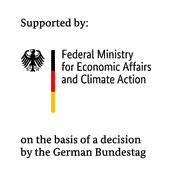The Cooperation Network
About the Network - Economic Goals
The cooperation network aims at the final replacement of the previous technologies/practices in the field of cryocooling below 2 Kelvin, down to 50 mK.
In the last 20-30 years, the so-called "dry" cryocoolers (Gifford McMahon, pulse tube cooler...), in which only helium-3 or -4 was used inside, have developed strongly.
Up to now, the so-called helium-mix cooling (He-3/He-4) has been predominantly used in this temperature range. This is only possible by means of a permanently installed, large apparatus with larger tanks for He-3 and -4 and special pumps, etc. It requires special knowledge for maintenance and operation, i.e. own personnel. It requires special knowledge for maintenance and operation, i.e. own personnel, and is therefore not suitable for many research facilities and permanent use on a large number of terminals. Due to the necessary refilling of partially evaporating helium, it is therefore described as not "dry". Modern mixing cryostats achieve typical cooling capacities of about half a milliwatt and final temperatures of a few millikelvin.
This technology is unlikely to be feasible in the future as the price of He-3 has risen from US$ 100 (around 2000) to over US$ 2,000 per litre since around 2016.
Presentation of the Initial Situation (Market and Competition)
Particular markets for the field of "cryo-technologies" (in the range of below 60K, i.e. liquid nitrogen temperatures), are the above-mentioned areas, such as "semiconductors", especially measuring systems, superconducting sensors (represented in many markets), superconducting magnets (increasingly also for electric drives, such as for "electric flying"), application of superconductors in power grids and, of course, the emerging "quantum technologies".
Explanation of the Economic Goals as well as the Expectations of the Network Partners
The network partners expect support from the cooperation network and an exchange among the partners in the sense that new, improved cryocoolers and products can be developed which offer the respective partners a competitive advantage, for example in the semiconductor industry or on the sensor market or in the application of superconductors in power grids or in electric motors or in research.
This can be achieved either by making such cryogenic machines available for the first time or by significantly increasing the efficiency or reducing the costs of such machines compared to helium mixing cooling.


